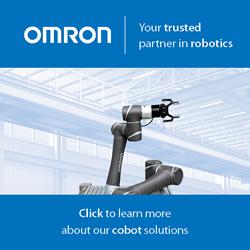Why Robotics Will Change Agriculture
2016 Best Year Ever for Funding Robotics Startup Companies
4 of the Coolest New Robots at CES
Google Tasks Robots with Learning Skills from One Another via Cloud Robotics
Preventing Your Robot Technology from Being Obsolete Tomorrow
Mining 24 Hours a Day with Robots
Amazon patents system to defend drones against hackers, jammers … and arrows
Upcoming Tradeshow, Conference & Exhibition Summary - February - April 2017
The Aggressively Flying Quadrotor
Robotics Veteran Raises Venture Capital to Build Exoskeleton
Robotmaster Reduces Outsourcing, Increases Production and Profitability
Japan's Rust Belt Counting on Robonomics to Run Assembly Lines
LiDAR 101: A Q&A with a Pictometry Expert
An Open Source Driving Agent from comma.ai
Future Drones Will Fly as Silent as Owls, as Steady as Bees
Records 2281 to 2295 of 3562
First | Previous | Next | Last
Featured Product

